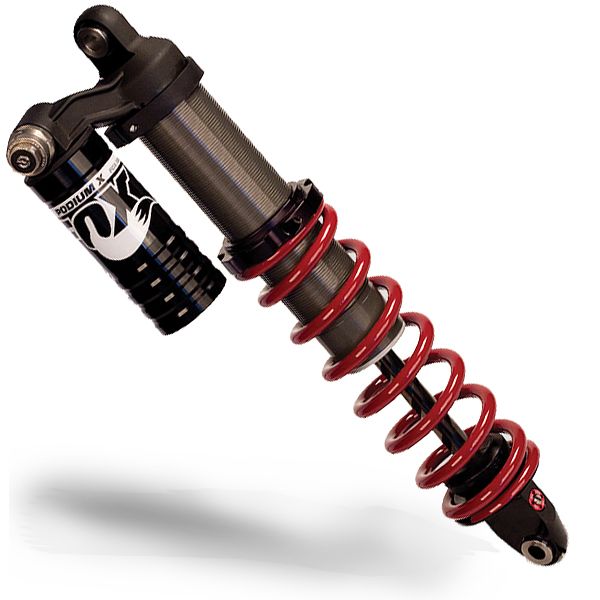Back
May. 24 2022 Maintenance By East Bay Motorsports
Your ATV shock absorbers are under immense pressure, constantly taking the heat while you go crashing around in the wilderness. All that hard work will cause the shocks to inevitably wear down over time, and they will eventually need to be rebuilt or replaced. But how can you tell when the time has come? This guide from East Bay Motorsports will help you evaluate your ATV shock absorbers, and determine whether a replacement is needed.
Feel free to contact us if you need any further assistance! East Bay Motorsports is your destination for ATV repair in Hayward, CA. We welcome customers from all over the Bay Area.
When you inspect the overall condition of your ATV, remember to include your shock absorbers. Watch out for these important visual clues that could indicate a problem with your shocks:
Your shock absorbers don’t just provide you with a smooth ride – they also support every component of your ATV. Replacing bad shocks right away will prevent them from wreaking havoc on the overall condition of your vehicle.
Visual inspections are important, but you will not necessarily be able to tell when your shocks have gone bad just by looking at them. Because shocks deteriorate gradually, it can be hard to notice when they begin to affect performance. You will need to pay close attention when riding your quad to detect any changes. If you have another ATV with fresh shocks at your disposal, you can do a comparison test.
Because shocks deteriorate gradually, it can be hard to notice when they begin to affect performance. You will need to pay close attention when riding your quad to detect any changes. If you have another ATV with fresh shocks at your disposal, you can do a comparison test.
You can tell your ATV has bad shocks when you experience excessive turbulence on rough terrain. If you feel jolted with every minor impact, you will need to replace the shocks. Slow braking is another indication. Try riding your ATV on level ground, and hit the brakes. If you feel the vehicle tip forward right before coming to a stop, your front shocks are probably to blame. Faulty rear shocks will cause the chassis to fall backward when you accelerate in reverse. If your ATV has bad shocks on one side, the chassis will roll toward one side when you go around turns. Shaky handlebars can also result from bad shocks, but in this case, you should also check the wheel alignment and tire pressure to rule out other problems.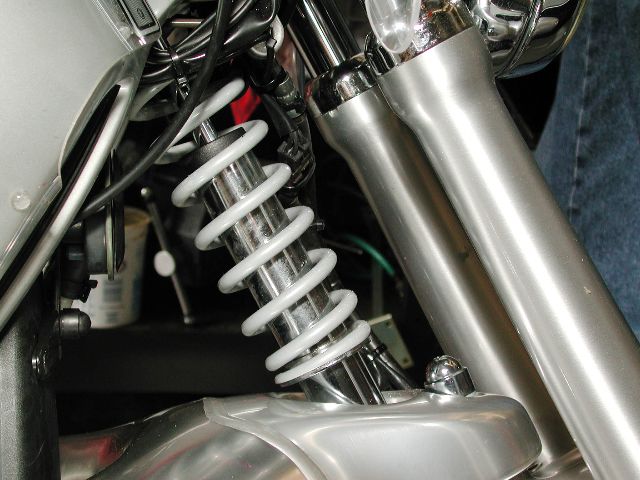
If and when your shocks need replacement, you can find all the parts and services you need right here at East Bay Motorsports. Our dealership is located in Hayward, CA.
See All Posts
Shocks aren’t as noticeable as a tire being flat, or the starter motor not working yet it’s very important to have your ATV shocks in good condition.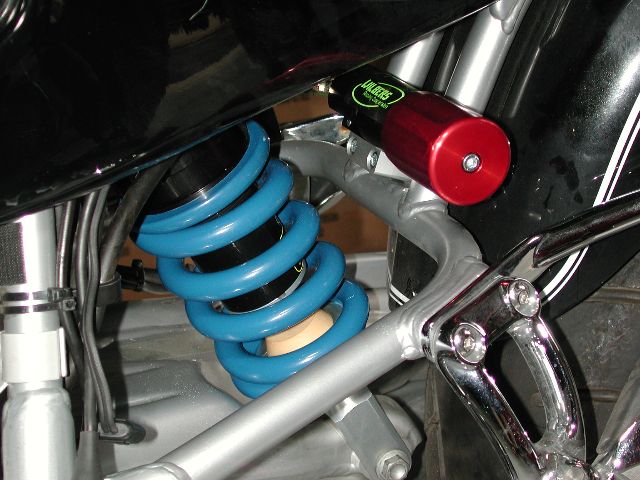 Because of that, it’s important to be able to identify when your ATV shocks are bad. Here’s a summary of the warning signs that indicate they are bad and should be looked at.
Because of that, it’s important to be able to identify when your ATV shocks are bad. Here’s a summary of the warning signs that indicate they are bad and should be looked at.
When you notice the nose dive when braking, the body tilting sideways in one or both directions as you turn, the ride feels more harsh and bumpy than normal, the rear sags when you accelerate, you have less traction than normal are all signs your ATV shocks are bad.
Shocks, and the springs they connect to, get worse slowly over time. Because of this fact, you can be unaware of an issue with your shocks because it developed so slowly. With that said if you take note of each of these signs then notice next time you ride your ATV for any of these symptoms you will be able to identify if there’s an issue.
It’s possible that your ATV will only have one sign that the shocks or springs are bad but it can show multiple.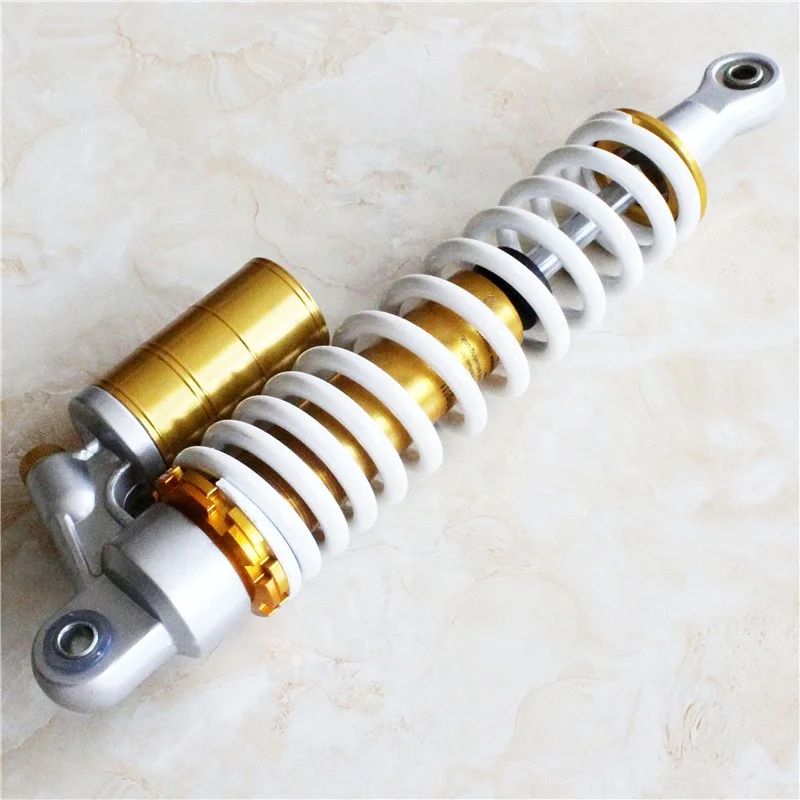 The symptoms are:
The symptoms are:
Before explaining what to look for, for each of these symptoms, it’s important to first understand that the shocks are attached to the top of the springs. The springs of ATVs are the big metal coil you can typically see. The springs can be adjusted so they are tighter or looser.
The springs can be loose or tight and simply need to be adjusted. In the owner’s manual of ATVs, it lists the exact specifications for the tightness and height of the springs. To understand this better here’s a really good video that shows the anatomy of ATV shocks and springs so you know how to see if the springs simply need adjusting.
Note: It goes into a bit of jargon and seems a bit complicated but simply put there’s a large screw that you wind up or down to adjust the spring height.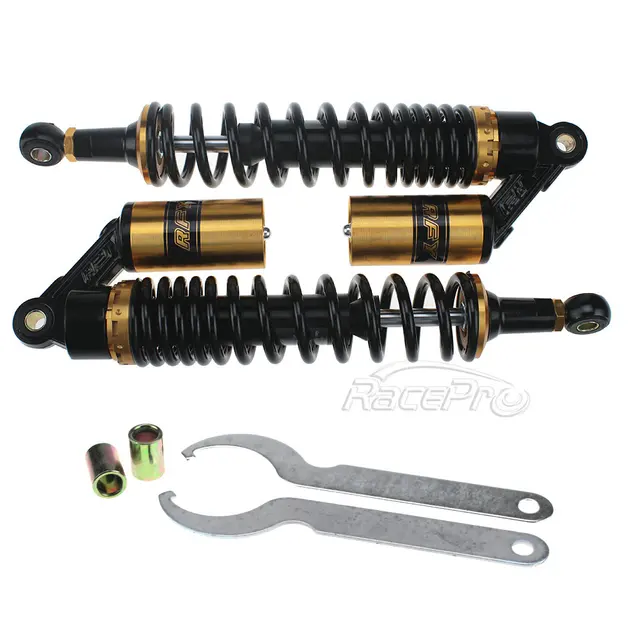
The weight of the ATV moves forward when you brake due to the tires being positioned at the bottom of an ATV. There will be a minor amount of nose-diving if you brake hard at high speeds but if it seems to have gotten worse. And/or it’s more noticeable, then it indicates that the front shocks or springs are bad.
As you corner the body of your ATV it will dip to the far side. For example, if you turn right the body will lean to the left. And if you’re turning left it will lean to the right. This is due to the weight of the ATV not being kept up with the shocks or springs. Instead of holding the body rigid the shocks or springs give too much.
This one can be difficult to detect because it occurs gradually over time. However, the shocks/springs can be broken or have come loose suddenly.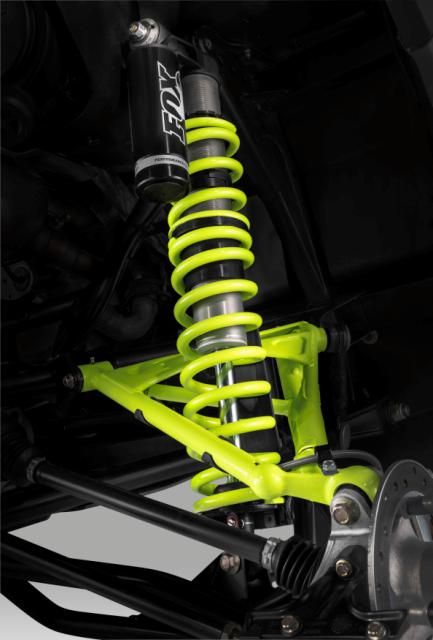 In this case, it will be much more noticeable.
In this case, it will be much more noticeable.
Accelerating on shocks that aren’t performing correctly or the springs have come loose causes the rear of the ATV to dip low, and the front to come up slightly. This causes a loss of traction in the front wheels which is undesirable. And leads steering is not as responsive.
It’s pretty easy to notice this one especially when it occurs when you accelerate slowly. It can help to watch videos of people riding your ATV model to see what amount of rear sag is normal.
If you encounter speed bumps, or a similar type of road condition in off-roading, a sign the shocks or springs need replacing or adjusting is if the rear bottoms out. The rear wheels come much closer to the wheel hub than looks or feels normal.
As an ATV or other vehicle with 4 wheels corners the shocks/springs on the far side will keep the body perfectly flat. This is another way to tell if the ATV is experiencing body tilt but is easier to identify if you’re riding your ATV.
This is another way to tell if the ATV is experiencing body tilt but is easier to identify if you’re riding your ATV.
If the shocks are not performing correctly as you corner the ATV will dip to the side and put additional pressure on the far side wheels. Making it more difficult to turn. You will need to turn sharper than you needed to when you first got it.
The reason is the force of the weight of the ATV is concentrated more on the outside tires. Rather than being spread evenly between all four tires.
In the owner’s manual of popular ATVs like the Polaris Sportsman, it’s recommended to inspect the shocks every time before you ride. Any signs of leakages around the shocks indicate an issue.
Also, it’s best practice to clear away any twigs, leaves, or anything else stuck in the shocks. They also recommend to thoroughly inspecting and adjusting them every 50 hours of riding, after 6 months, or after 500 miles or 800 km, whichever comes first.
The owner’s manual doesn’t list any specific checks to do, in my opinion, you should have them checked over by a mechanic as part of the service.
Another part of an ATV that will eventually experience issues is the clutch. In another article, I explained how to know when an ATV clutch is bad and when it needs to be serviced or replaced.
When riding your ATV you can feel like the shocks are a bit bouncy and you would be more comfortable if the shocks didn’t have so much give in them. Here’s how to adjust the ATV shocks so they’re stiffer.
Adjust the height of the spring so that it’s shorter to stiffen ATV shocks. This is done by adjusting what is called the preload. Every ATV has a stock spring height virtually always listed in the owner’s manual. From the stock spring height make the spring shorter by adjusting it to your liking.
One issue when the spring is shorter is you can get more rebound. This is because the spring is under more tension. When you go over bumps it will bounce back more which can be a bit uncomfortable.
It’s also not possible to adjust the spring height on some ATVs. In the owner’s manual see if they provide any guidelines about how much you can adjust the spring height from the stock height. And if in doubt contact your ATV manufacturer to enquire about whether it’s OK to do on your specific make and model.
In the owner’s manual see if they provide any guidelines about how much you can adjust the spring height from the stock height. And if in doubt contact your ATV manufacturer to enquire about whether it’s OK to do on your specific make and model.
The suspension on an ATV can be a bit stiff. Softening the suspension makes it more comfortable. So here’s how to make the suspension on an ATV softer.
The height of the spring can be increased. This will cause the spring to be under less tension and make the suspension softer. The owner’s manual will list the recommended spring height. Start with that and increase it a small amount at a time until it’s to your liking.
It’s important to only adjust it as much as it needs, as the springs are designed to provide proper suspension within a height range. If you’re unsure or would rather have a professional do it, then contact the nearest dealer for your ATV. Or, your nearest motorcycle/ATV mechanic to have them adjust it for you.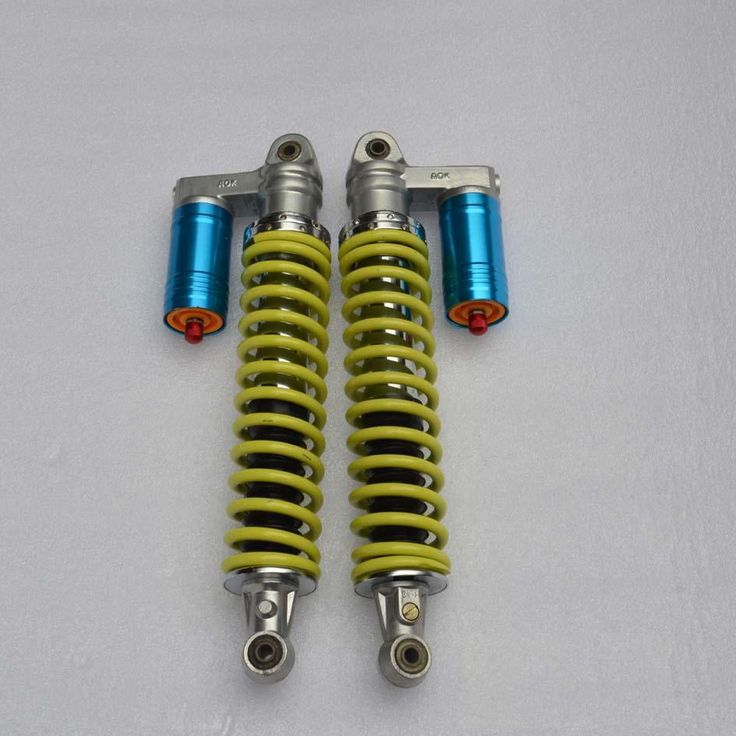
LADA
UAZ
Kia
Hyundai
Toyota 9000 9000 9000 9000 9000 9000 9000 9000 9000 9000 9000 9000 9000 9000 9000 9000 9000 9000 9000 9000 9000 9000 9000 9000 9000 9000 GAZ
BMW
Mercedes-Benz
Mitsubishi
Mazda
Ford
All brands
Capel reminds of the approaching active car season. Before a long trip, you need to make sure that the car is in good condition. We check shock absorbers with Mikhail Kolodochkin.
Cheap, reliable and practical. Visual inspection during the diagnosis of shock absorbers is a mandatory procedure. If you find a way to look at shock absorbers, then at least traces of oil on the shock body can be seen immediately. In order to make sure that the diagnosis is correct, it is enough to wipe the shock absorber with a rag and repeat the examination after a few days. If the car is on a lift, then at the same time try to assess the condition of the shock absorber rods: they should sparkle! Traces of rust or other ugliness are a sign of a malfunction.
If the car is on a lift, then at the same time try to assess the condition of the shock absorber rods: they should sparkle! Traces of rust or other ugliness are a sign of a malfunction.
Tires can also tell you about problems with shock absorbers. Uneven wear spots hint at a malfunction. It is also worth assessing the condition of the protective kits (anthers) and springs, then the upper supports. Well, ideally, all other suspension elements. But here an experienced eye is already needed.
Unfortunately, a failed shock absorber itself may not show external signs of wear. Its inefficient operation can be caused by wear of internal components and materials: it is visually impossible to calculate this. In such cases, other diagnostic methods should be used, as well as recall the actual period of its operation.
Not the most accurate, but the most popular and visual method of diagnosis. It is required to vigorously rock the front / rear of the car, then remove the load and watch how quickly the body stops rocking. If, after removing the load, it performs more than one cycle of buildup, it means that the buildup was not done in vain: the shock absorber, alas, is crappy ... The only trouble is that in this way you can only determine a completely “dead” product, and even then with proper experience. Another thing is if the shock absorber is tightly jammed: this will be determined instantly, since it simply will not be possible to rock the car.
If, after removing the load, it performs more than one cycle of buildup, it means that the buildup was not done in vain: the shock absorber, alas, is crappy ... The only trouble is that in this way you can only determine a completely “dead” product, and even then with proper experience. Another thing is if the shock absorber is tightly jammed: this will be determined instantly, since it simply will not be possible to rock the car.
Try not to overdo it when swinging, so as not to damage the body parts - this happens too ...
If, while driving, the car suddenly acquires some kind of independence - scours on bumps, sways in all directions, reluctantly reacts to the steering wheel, then most likely the shock absorbers are to blame. Contrary to popular belief, this manifests itself not only at high speeds, but even if there are quite “city” numbers on the speedometer. At the same time, you don’t need to write out a pretzel on the road - in a quiet place, exercises such as acceleration, braking, snake are enough .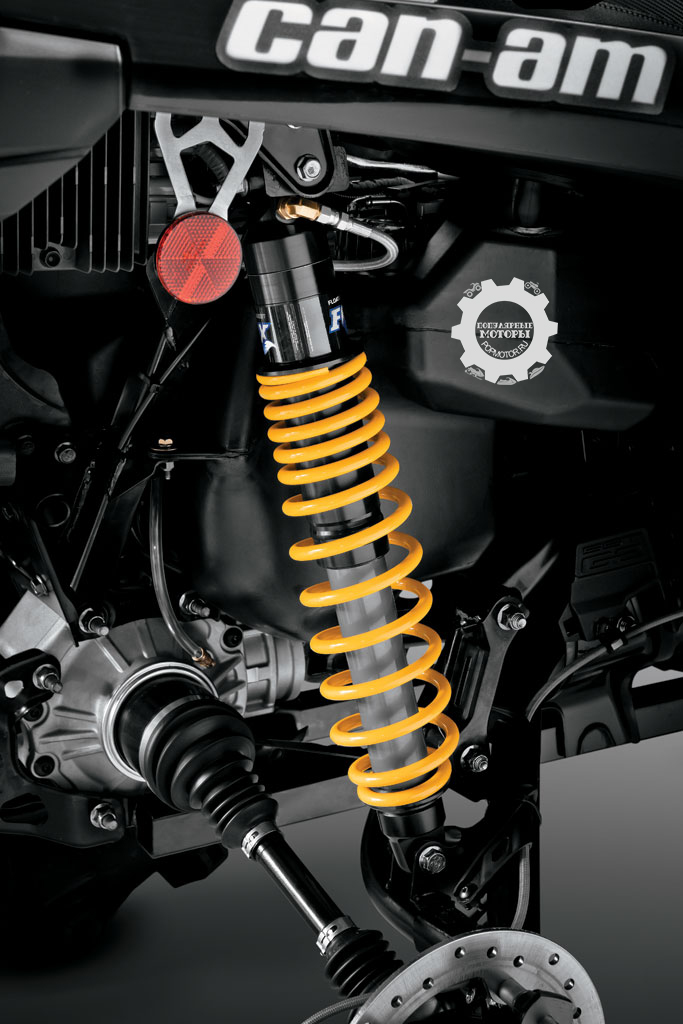 .. In any case, if the car’s handling has worsened over time, you should contact competent specialists for diagnostics.
.. In any case, if the car’s handling has worsened over time, you should contact competent specialists for diagnostics.
For example, you can see in this video how cars with good shock absorbers and not behave.
:
The easiest, quickest and not too expensive way to get general information about suspension performance is to go to the diagnostic stand, take measurements and listen to the verdict.
Another question is how exactly the sentence will refer directly to shock absorbers. The fact is that in the case of various kinds of "shaking" (of which there have been more and more lately), the presence of at least one faulty element (not necessarily a shock absorber) will significantly affect the final results of the efficiency indicator. In addition, the algorithms used to evaluate the effectiveness of the suspension work are different, and diagnostics of one vehicle on different stands may lead to the fact that the obtained data on the state of the suspension may differ.
There are cases when, when diagnosing a car on a "shake" with a working suspension and recently replaced shock absorbers, the data obtained indicated a low residual effectiveness of the suspension. But during the "test drive" the car behaved perfectly. The reason is that the stand was not designed for more "hard" settings of the tuning series shock absorbers compared to the characteristics of the original products, as a result - the wrong verdict. Well, that happens too.
A very important point! The final indicators can be affected by such parameters as tire pressure, vehicle loading during diagnostics, small deviations from a straight line when entering the stand (the appearance of an angle of deviation from the longitudinal axis), accidental installation of the car on the handbrake, uneven vehicle loading during diagnostics, etc. .d. It will be a real pleasure for a negligent master to "divorce" a client for the cost of new shock absorbers, in order to casually pump up a flat tire for him in between times.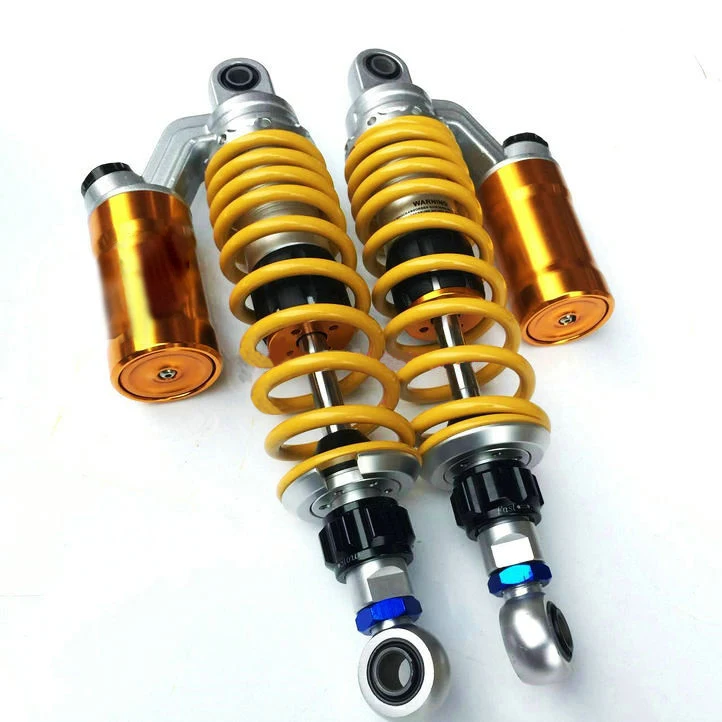 ..
..
There is no single known correct way to diagnose shock absorbers. Each case has its own specifics. Bon Voyage!
Our new video
Geely Tugella: just look!
Youtube channel Behind the wheel gained 800 thousand subscribers
Instead of Largus and GAZelle: 5 shock impressions from the new "Chinese"
Like the article? Subscribe and you will always be in the know!
Driving on Yandex.Zen
News smi2.ru
Shock absorbers are usually particularly troublesome parts that require increased attention. Periodic check of shock absorbers by a specialist is a mandatory procedure for the owner of an SUV. Even if there are no problems, shock-absorbing installations should be checked for serviceability at the service station regularly.
The owner of an off-road vehicle can independently determine a malfunction in the system, referring to the symptoms:

If these symptoms occur, this does not mean that the device is completely unusable. The machine is still working with some variants of malfunction. But such a ride can be fraught with consequences.
When wear has reached a critical state, the owner of the car may not be able to determine the breakdown on his own. To troubleshoot, it is worth contacting an experienced auto mechanic. An externally worn element has oil residues, mechanical damage to the rod, worn bushings.
To properly check the racks, you should contact the workshop. There is a special diagnostic method - a stand. Using the device, you can set the vehicle to vertical oscillations with different frequencies. Different amplitude is a kind of imitation of real driving over bumps. Naturally, the wheels react to such an impact. The electronic brain of the stand determines the effectiveness of the shock-absorbing devices.
A qualified workshop employee knows how to correctly diagnose a breakdown.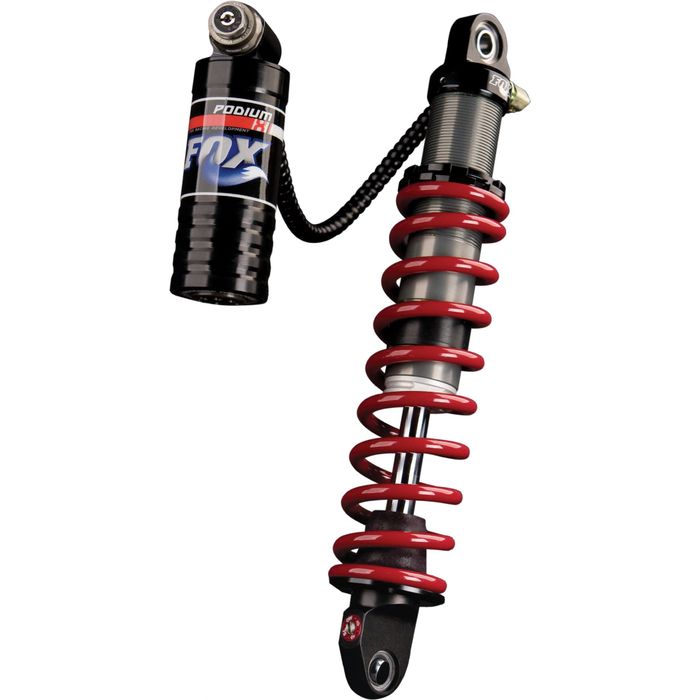 He will also decipher the data of the diagnostic stand. Information about the operation of the device is displayed on the screen or printer. Residual efficiency is measured as a percentage.
He will also decipher the data of the diagnostic stand. Information about the operation of the device is displayed on the screen or printer. Residual efficiency is measured as a percentage.
After evaluating the measurement data of the device, a decision should be made on further actions regarding the assembly, since it is necessary to check the shock absorber struts if a breakdown is suspected.
The shock absorber is designed to dampen the vibrations that occur when the SUV is driving on the road. The mechanism is based on the conversion of mechanical energy into thermal energy. Springs, torsion shafts, pillows, springs are related components that work in conjunction with racks.
The driver is obliged to carry out systematic diagnostics, since checking the shock absorber for performance is a responsible matter. The element has a failure property. The faster the owner of the car notices problems, the less money will be spent later. After all, restoring a car after that is an expensive pleasure.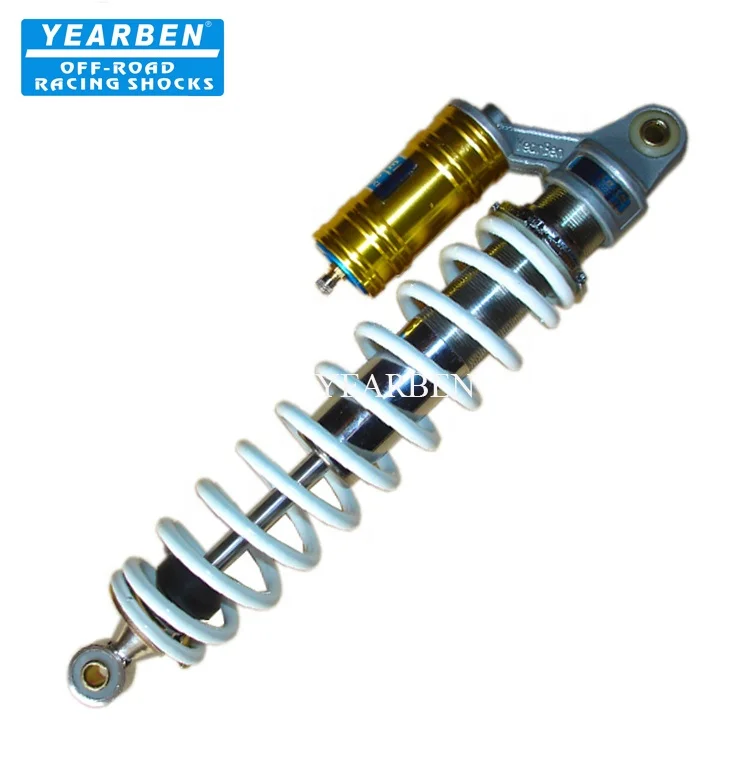
The failure of the shock absorber has consequences.
Correct timely diagnosis of parts is of particular importance, since checking a removed shock absorber is an important responsible step. This affects driving comfort and safety.
Having figured out how to check the removed shock absorbers, you should buy a new element if you need a simple replacement. Our online store "Suv" offers quality products from popular manufacturers at an affordable price.